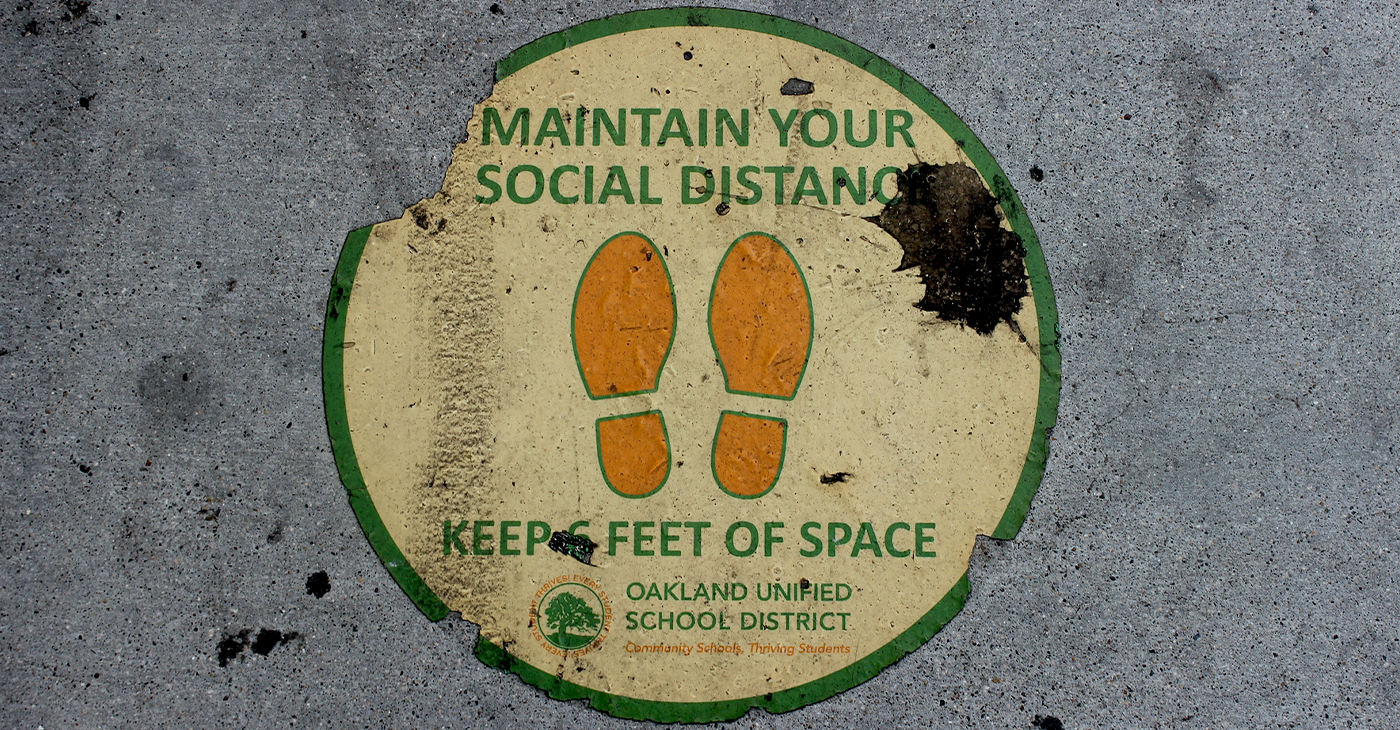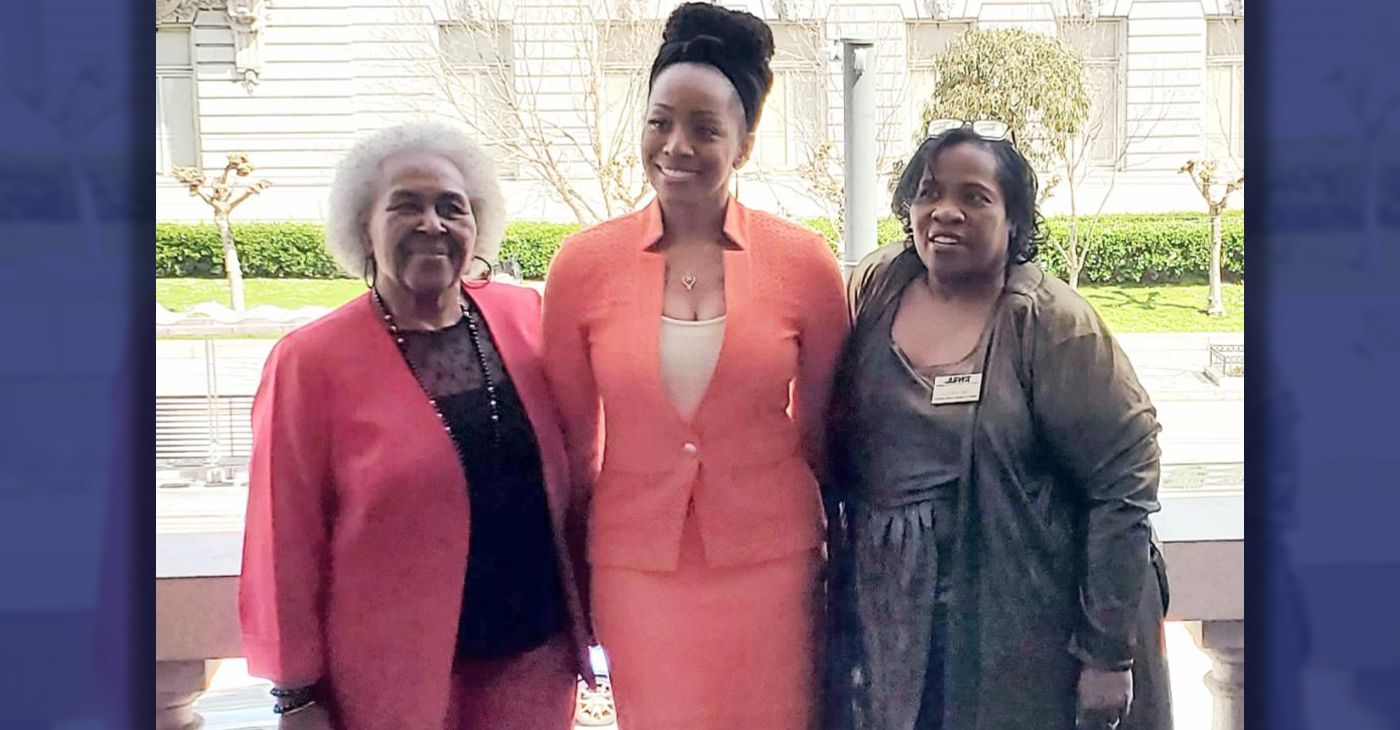Bay Area
OUSD is No Longer Publishing its COVID Data
Teachers, students and the Oakland Education Association had been vocal about COVID safety issues during the last two school years. Last January, OUSD teachers protested, as did students, in independent non-union affiliated sick-out and/or walk-out actions calling for better COVID safety measures. OEA pressed the district and negotiated over safety issues, and eventually struck a safety agreement deal that included making high quality masks available for free at all schools. This year, though, there have not been COVID protests. None of the four newsletters OEA has released this year have the word COVID in them, and its website no longer has any navigable page for COVID resources.

By Zack Haber
The Oakland Unified School District is no longer publishing data this school year to inform students, staff, parents and the public about positive COVID cases in schools.
“The district is responding to all positive cases of which we are notified,” wrote OUSD spokesperson John Sasaki in an email to the Post News Group. “However, consistent with state and county guidance, we are no longer aggregating and cleaning the data in the same way we were last year.”
During last school year, OUSD, along with neighboring school districts, published regularly updated dashboards that informed the public about positive COVID cases both district wide and in individual schools. While OUSD has retired its COVID dashboard, the Alameda, Berkeley, Emeryville, and San Leandro Unified School Districts are continuing to update theirs.
In an email, Berkeley Unified School District spokesperson Trish McDermott wrote that her district continues to “share our case count information with our community on our dashboard to inform their own choices about masking and testing.”
Spokesperson Keziah Moss wrote that the San Leandro School District has “continually operated with full transparency with our staff and families.” Moss called the publicly accessible COVID data “helpful to everyone as we monitor health and wellness in our schools.”
In an interview with the Post News Group, OUSD parent Innosanto Nagara expressed frustration about the dashboard’s removal, and also cast doubt on the adequacy of OUSD’s process of testing and collecting COVID data.
“Without the dashboard I have no idea how many students have COVID,” said Nagara. “But it’s not just the dashboard that’s gone. Basically, the whole system of monitoring, testing, and reporting is gone too.”
According to Nagara, last school year his son was tested for COVID twice a week at the school he attends, Melrose Leadership Academy, but that practice has ended.
“Before this school year started our school sent out an email saying you could come pick up a test,” said Nagara. “And that was all I’ve heard about testing.”
According to Sasaki, OUSD’s decision to retire its dashboard is “in alignment with” a resolution the school board passed on June 22. The resolution no longer requires the district to publish its COVID data and ended bi-weekly testing at all schools. While the district is still required to distribute take-home tests to students and host staffed testing hubs, there are no requirements as to how many tests must be distributed or how many hubs must remain open. Sasaki says rapid tests are available to all students who are symptomatic or exposed. This month, OUSD has two to four testing hubs for PCR testing open during weekdays from 8 a.m. to 4 p.m., which is roughly the same hours that schools are open.
Board Director Mike Hutchinson, who introduced the resolution, told this reporter in a message that the resolution’s intent was “resetting the district’s response to COVID this year, so we are in alignment with the state and the CDC and still have flexibility to shift if needed.”
“Thankfully we don’t need the same level of testing or reporting that we did last year,” wrote Hutchinson. “It’s good news that we’ve been able to scale back and shift our response to COVID.”
All elected directors currently serving on the school board voted to approve Hutchinson’s resolution. Director Kyra Mungia, who was appointed to the board, had not yet taken on her position when the vote was held.
In an email to this reporter, Board Director Sam Davis wrote that while he had been “an advocate of more available [COVID] data” during last school year, he “didn’t see any reason to push back against” Hutchinson’s resolution for this year. Davis called the gathering and reporting of COVID data as “a big lift,” and wrote that “it does not seem like schools should be under the burden of doing that work when it is not being done for any of the places where people are gathering in large numbers, usually unmasked, such as bars, concerts and restaurants, in ways that are probably contributing a lot more to community transmission than schools are.”
Board Directors Aimee Eng, Clifford Thompson, and VanCedric Williams, did not respond to multiple requests for comment for this story. Director Gary Yee did not answer when asked why he voted to approve Hutchinson’s resolution but wrote in an email he thought that Superintendent Dr Kyla Johnson-Trammell’s implementation of the resolution was consistent with its intent.
During public comments of a school board meeting on Aug. 24, Dorothy Graham criticized OUSD for no longer publishing COVID data.
“How are families supposed to understand the spread of COVID in our schools and the risk to our students with no data?” she asked.
Graham is a former director of the Alameda Health Consortium and has over 40 years experience working in public health. She’s also a high COVID risk individual with a grandson who attends an OUSD school. In an interview, Graham said she felt that OUSD is shifting its response from collective to individual responsibility. Like other districts in the area and across the country, masks are now optional at OUSD. Grahams is critical of the district’s choice to no longer release COVID data while the end of required masking could put more people at risk and feels it’s especially important now that people have access to COVID data so they can make informed risk assessment choices.
“The data dashboard provided imperfect but vital information to understand where things were at,” Graham said. “You could see the spikes in cases and know how urgent it was to test.”
As the OUSD school year started in early August, the CDC was saying COVID transmission was high throughout the Bay Area. It is unclear how widespread COVID is now and if it is less of a risk this school year. Vaccinations provide protection for many people against the worst COVID symptoms, but their potency wanes as time passes and over 25% of students and 45% of Black students are not vaccinated.
It is also unclear how widespread COVID is currently in Alameda county. Since last spring, private and state health institutes and departments have been saying that COVID case rates have likely become increasingly undercounted as take-home COVID tests are more available while government testing is less available. The increased ability to test independently has caused people to report their cases to health departments less frequently. The county’s data dashboards currently show that rates of reported COVID cases over the last four months have sharply fallen. They also show COVID related hospitalizations and inpatient rates have sharply risen for about the last six months. The county is currently administering tests at about the same rate as they were at the start of the pandemic.
Graham feels not many people are speaking out about OUSD related COVID issues.
“I was the only person to mention the word COVID at the board meeting,” she said. “Voices you’d expect to be speaking out about this, aren’t.”
Teachers, students and the Oakland Education Association had been vocal about COVID safety issues during the last two school years. Last January, OUSD teachers protested, as did students, in independent non-union affiliated sick-out and/or walk-out actions calling for better COVID safety measures. OEA pressed the district and negotiated over safety issues, and eventually struck a safety agreement deal that included making high quality masks available for free at all schools. This year, though, there have not been COVID protests. None of the four newsletters OEA has released this year have the word COVID in them, and its website no longer has any navigable page for COVID resources.
In a statement emailed to this reporter, OEA President Keith Brown wrote that “We can’t let our guard down against COVID.” Brown pointed out that agreements made with the district last school year have continued into this year. These include providing classrooms with quality air filtration, providing substitute teachers in classrooms, and ensuring that “OUSD maintains a stockpile of high-quality masks and rapid tests.”
According to Brown, OEA has also been encouraging more transparency in relation to COVID data this year.
“Our safety agreement sets the minimum, and we will continue to encourage OUSD to go above and beyond,” Brown wrote, “including transparently reporting known cases.”
In the meantime, OUSD parent Innosanto Nagara and grandparent Dorothy Graham remain unsatisfied with the district’s COVID procedures and want more transparency.
“I feel like we sent kids in this year like COVID was over from the district’s concern,” said Nagara.
“I think they retired the dashboard very prematurely.” said Graham. “Why is this controversial? Releasing the data should just be common sense.”
Activism
Oakland Post: Week of April 24 – 30, 2024
The printed Weekly Edition of the Oakland Post: Week of April 24 – 30, 2024

To enlarge your view of this issue, use the slider, magnifying glass icon or full page icon in the lower right corner of the browser window. ![]()
Alameda County
DA Pamela Price Stands by Mom Who Lost Son to Gun Violence in Oakland
Last week, The Post published a photo showing Alameda County District Attorney Pamela Price with Carol Jones, whose son, Patrick DeMarco Scott, was gunned down by an unknown assailant in 2018.

Publisher’s note: Last week, The Post published a photo showing Alameda County District Attorney Pamela Price with Carol Jones, whose son, Patrick DeMarco Scott, was gunned down by an unknown assailant in 2018. The photo was too small for readers to see where the women were and what they were doing. Here we show Price and Jones as they complete a walk in memory of Scott. For more information and to contribute, please contact Carol Jones at 510-978-5517 at morefoundation.help@gmail.com. Courtesy photo.
Bay Area
State Controller Malia Cohen Keynote Speaker at S.F. Wealth Conference
California State Controller Malia Cohen delivered the keynote speech to over 50 business women at the Black Wealth Brunch held on March 28 at the War Memorial and Performing Arts Center at 301 Van Ness Ave. in San Francisco. The Enterprising Women Networking SF Chapter of the American Business Women’s Association (ABWA) hosted the Green Room event to launch its platform designed to close the racial wealth gap in Black and Brown communities.

By Carla Thomas
California State Controller Malia Cohen delivered the keynote speech to over 50 business women at the Black Wealth Brunch held on March 28 at the War Memorial and Performing Arts Center at 301 Van Ness Ave. in San Francisco.
The Enterprising Women Networking SF Chapter of the American Business Women’s Association (ABWA) hosted the Green Room event to launch its platform designed to close the racial wealth gap in Black and Brown communities.
“Our goal is to educate Black and Brown families in the masses about financial wellness, wealth building, and how to protect and preserve wealth,” said ABWA San Francisco Chapter President LaRonda Smith.
ABWA’s mission is to bring together businesswomen of diverse occupations and provide opportunities for them to help themselves and others grow personally and professionally through leadership, education, networking support, and national recognition.
“This day is about recognizing influential women, hearing from an accomplished woman as our keynote speaker and allowing women to come together as powerful people,” said ABWA SF Chapter Vice President Velma Landers.
More than 60 attendees dined on the culinary delights of Chef Sharon Lee of The Spot catering, which included a full soul food brunch of skewered shrimp, chicken, blackened salmon, and mac and cheese.
Cohen discussed the many economic disparities women and people of color face. From pay equity to financial literacy, Cohen shared not only statistics, but was excited about a new solution in motion which entailed partnering with Californians for Financial Education.
“I want everyone to reach their full potential,” she said. “Just a few weeks ago in Sacramento, I partnered with an organization, Californians for Financial Education.
“We gathered 990 signatures and submitted it to the [California] Secretary of State to get an initiative on the ballot that guarantees personal finance courses for every public school kid in the state of California.
“Every California student deserves an equal opportunity to learn about filing taxes, interest rates, budgets, and understanding the impact of credit scores. The way we begin to do that is to teach it,” Cohen said.
By equipping students with information, Cohen hopes to close the financial wealth gap, and give everyone an opportunity to reach their full financial potential. “They have to first be equipped with the information and education is the key. Then all we need are opportunities to step into spaces and places of power.”
Cohen went on to share that in her own upbringing, she was not guided on financial principles that could jump start her finances. “Communities of color don’t have the same information and I don’t know about you, but I did not grow up listening to my parents discussing their assets, their investments, and diversifying their portfolio. This is the kind of nomenclature and language we are trying to introduce to our future generations so we can pivot from a life of poverty so we can pivot away and never return to poverty.”
Cohen urged audience members to pass the initiative on the November 2024 ballot.
“When we come together as women, uplift women, and support women, we all win. By networking and learning together, we can continue to build generational wealth,” said Landers. “Passing a powerful initiative will ensure the next generation of California students will be empowered to make more informed financial decisions, decisions that will last them a lifetime.”
-

 Activism4 weeks ago
Activism4 weeks agoOakland Post: Week of March 27 – April 2, 2024
-

 #NNPA BlackPress4 weeks ago
#NNPA BlackPress4 weeks agoBeloved Actor and Activist Louis Cameron Gossett Jr. Dies at 87
-

 Community1 week ago
Community1 week agoFinancial Assistance Bill for Descendants of Enslaved Persons to Help Them Purchase, Own, or Maintain a Home
-

 Activism3 weeks ago
Activism3 weeks agoOakland Post: Week of April 3 – 6, 2024
-

 Business2 weeks ago
Business2 weeks agoV.P. Kamala Harris: Americans With Criminal Records Will Soon Be Eligible for SBA Loans
-

 Activism2 weeks ago
Activism2 weeks agoOakland Post: Week of April 10 – 16, 2024
-

 Community2 weeks ago
Community2 weeks agoAG Bonta Says Oakland School Leaders Should Comply with State Laws to Avoid ‘Disparate Harm’ When Closing or Merging Schools
-

 Community1 week ago
Community1 week agoOakland WNBA Player to be Inducted Into Hall of Fame























































